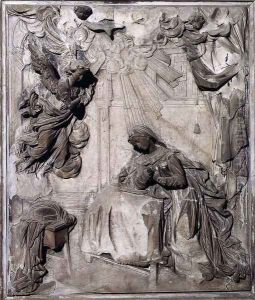Giovanni Bonazza Paintings
Giovanni Bonazza was an Italian sculptor of the Baroque period, born in 1654 in Pianezze, a small town in the Republic of Venice. He was active primarily in the Veneto region of Italy, particularly in and around Padua, Vicenza, and Venice. Bonazza's work is characterized by its dynamic form, expressive figures, and the fluidity of drapery that was typical of Baroque sculpture. His style reflects the influence of prominent Baroque artists such as Gian Lorenzo Bernini while maintaining a distinctive elegance and clarity.
Bonazza trained under his father, also a sculptor, and continued to develop his craft in the artistic environment of Venice. Throughout his career, he received numerous commissions for religious and secular works, which included altarpieces, statues, and decorative elements for buildings. His sculptures often featured in churches, where his skill in creating emotive religious figures was particularly appreciated.
One of his notable works is the altar of the Chapel of St. Dominic in the Church of Santi Giovanni e Paolo in Venice, which showcases his ability to convey deep spirituality combined with a masterful technique. Bonazza's work was also sought after for private gardens and villas, where his secular sculptures, including mythological figures and decorative vases, added to the grandeur of the Venetian landscape.
Despite his success, Bonazza's work was somewhat overshadowed by the overwhelming fame of his contemporaries in other parts of Italy, such as Bernini and Francesco Borromini. Nevertheless, his contribution to the Baroque movement in the Veneto region is significant, and his works are still admired for their beauty and craftsmanship.
Giovanni Bonazza passed away in 1736 in Padua. Today, his sculptures can be found in various Italian churches and museums, where they continue to be studied and appreciated by art historians and enthusiasts. His legacy lives on as a testament to the skill and creativity of Baroque artists in the Venetian territories.
